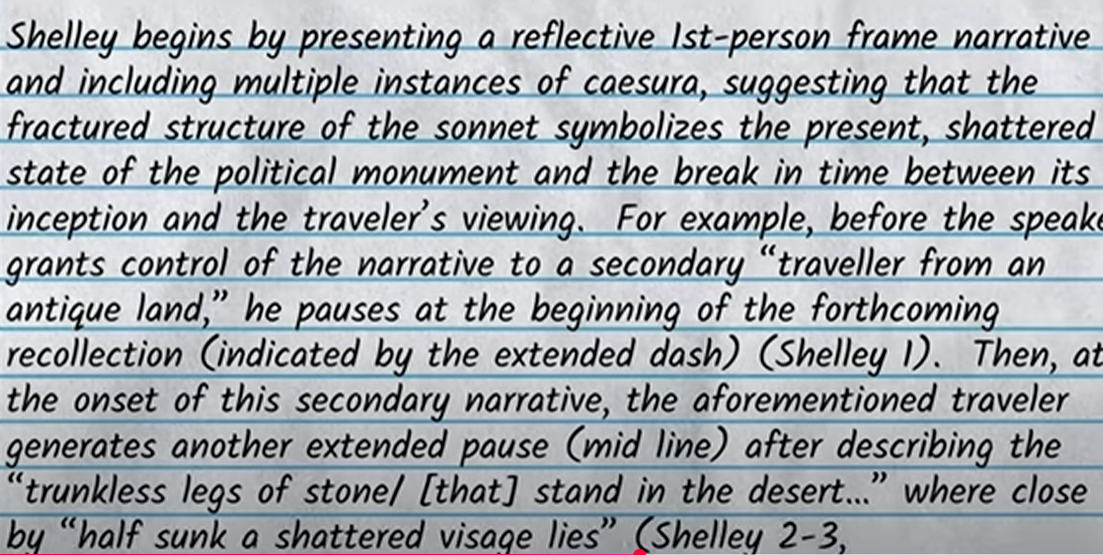Notes on Integrating Textual Evidence in Poetry Analysis Essays
Introduction
Common problem: Students often improperly integrate textual evidence in literature essays, especially poetry.
Speaker: Tim Frus from Garden of English.
Common Mistakes in Evidence Integration
Dropping Lines Without Context:
Students insert lines from poems and expect them to stand alone.
Example: Dropping lines from the poem "Ozymandias" directly into the essay.
Using Cliché Introductions:
Students often start quotes with phrases like "the poet says" or "the text reads."
These phrases are inadequate for effective integration.
Lack of Context:
Failing to provide sufficient context makes it hard for the reader to understand the significance of the quoted lines.
Evidence Integration Process
The goal is to create a seamless transition from the topic sentence to the evidence.
Start the second sentence of the body paragraph with phrases like:
"For example,"
"For instance,"
"Take for example how…"
Contextual Language for Quotation
Words to use based on the poem's lines:
For the first to third lines: "before" or "prior to."
For lines afterward: "after" or "following."
This integration enhances clarity and readability of the essay.
Example of Effective Integration
Integration example in context:

Phrases such as "before" provide necessary transitions that introduce the evidence.
The structure emphasizes caesura as a poetic element discussed in the topic sentence.
Use of Brackets in Quotes
Brackets are used to clarify or modify quotes without altering the original meaning:
They allow adjustments to match tense or enhance clarity while quoting.
Important as they exhibit scholar integrity and provide necessary context.
Final Recommendations
Practice:
Encourage practice of integrating evidence effectively.
Review:
Return to learn about commentary to complete body paragraphs.
Conclusion
Integrating textual evidence is crucial for effective poetry analysis essays:
Begin with contextual language.
Provide the necessary background.
Use concise and relevant snippets from the text.
Utilize brackets for clarity when needed.
Explore additional resources from the Garden of English for further learning!